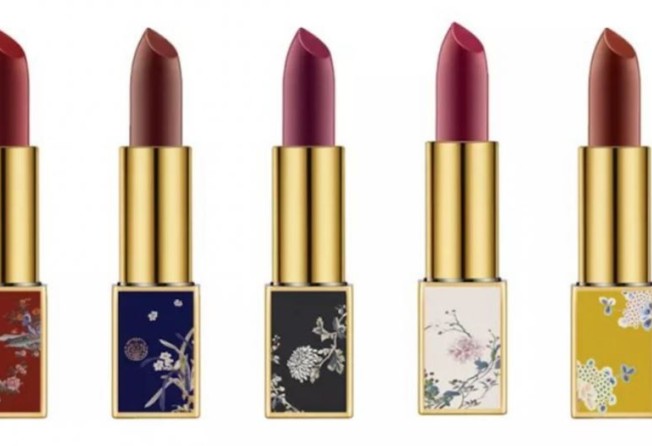From foot-binding to big hair, in imperial China, beauty trends began in the palace
- The Palace Museum in Beijing recently released a line of lipsticks, which sold out within days
- In ancient China, fashion and cosmetic trends were started by the ladies of the Forbidden Palace

For decades, the mainland Chinese market for beauty products has been dominated by foreign brands. Last month, however, more than 100,000 lipsticks developed by the Palace Museum in Beijing were snapped by up online buyers within days of their launch. Many were reportedly attracted by the pretty packaging, inspired by artefacts in the museum’s collection.
This reflects a growing trend among mainland Chinese consumers of supporting home-grown brands and celebrating a genuine Chinese aesthetic across a variety of products. Unfortunately for those who bought the cosmetics, the products proved to be a case of style over substance, and production has ceased following countless complaints on social media.
That the Palace Museum, formerly the Forbidden Palace and residence of emperors, had created beauty products and sold them to the public harks back to the past, when the imperial palace, as well as the princely and noble houses, were the arbiters of fashion. Palace ladies would start a beauty or fashion trend, which would then percolate down to the denizens of the capital before radiating outwards towards the provinces.
A song was sung in the capital in the late first century AD during the Eastern Han dynasty: “When the palace fancies bouffant coiffures, women elsewhere raise their hair by one chi (equivalent to around 23cm); when the palace fancies thick eyebrows, women elsewhere paint theirs to cover half their foreheads; when the palace fancies voluminous sleeves, women elsewhere sew theirs with a whole roll of cloth.”
One interpretation of the song is that it was a criticism of the extravagance of Empress Dowager Ma, who was famed for her long, beautiful hair, which she wore in elaborate styles, and the unique way she painted her eyebrows to mask an imperfection on her left one. Although the empress dowager had projected an image of herself as a thrifty manager of the palace, the popular song, deemed sufficiently important to be recorded in full in the official histories, suggested that she might have been more extravagant than she made herself out to be.

On being informed of what the people were singing, Ma became more conscientious about reducing palace expenditure. Whether this interpretation is correct, the lyrics clearly indicated how closely the fashions of the palace were followed by “women elsewhere”.
Another palace-inspired beauty trend was foot-binding, a nefarious custom that afflicted Chinese women for close to a millennium. It was a cruel form of body modification, where girls’ feet were tightly bound, bones broken and sometimes cut to achieve the desired size and to ensure that their feet remain tiny in adulthood.
The origins of foot-binding are sketchy but textual and archaeological evidence indicates that the practice began among high-born women in the Song period (960–1279). A novel written during that era described an imperial princess having to escape the marauding Khitan invaders in her bare feet, resulting in her previously bound feet returning to their former size. It is recorded in the official History of Song, produced in the 1340s, that, “during the reign of Emperor Lizong of the Southern Song dynasty (1224–1264), palace ladies bound their feet to make them small and straight”.

Foot-binding became very popular in the subsequent centuries among Chinese women, many of whom saw minute feet as a badge of feminine daintiness and beauty. Thankfully, it died out in the early 20th century. A great-grandmother of mine (my mother’s paternal grandmother) bound her feet, but quite late in childhood, when her feet had grown too large, in the belief that it would make her more marriageable. She must have suffered excruciating pain for most of her life, which may explain her psychotic temper.
Peddling lipsticks encased in attractive packaging seems pretty insignificant, particularly when they are not up to standard, but still, the Palace Museum can play a significant role in China’s rediscovery of its own aesthetic vocabulary. One can but hope the products and practices it champions are cruelty-free.